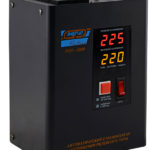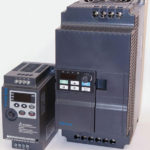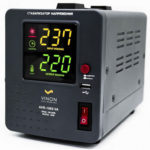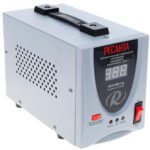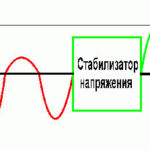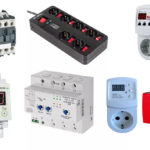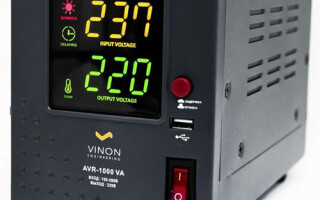In many settlements, the quality of electricity leaves much to be desired. The voltage in the network is changeable or jumps at all, this makes it difficult or impossible for many electrical appliances to work. In such conditions, the use of a voltage stabilizer would be an ideal choice. But, sometimes there are conditions under which it is required to exclude the device from the power supply circuit. The useful Bypass function helps consumers with this.
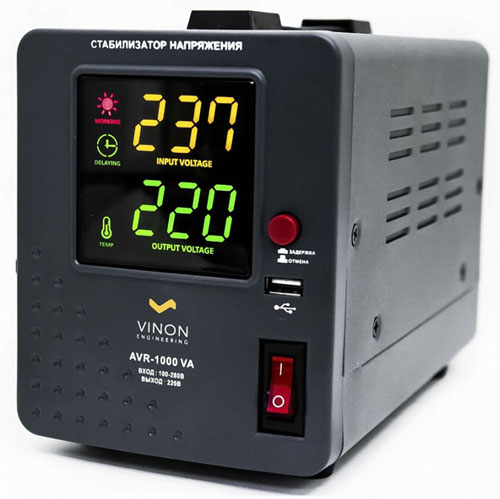
Content
The principle of operation of the voltage stabilizer
The main purpose of the stabilizer is to allow the consumer not to worry about the safety of their electrical appliances. Modern devices do this automatically and differ only in ways of normalizing electrical energy.
In fact, these are converters that allow you to get a stable power supply that does not depend on fluctuations in the incoming voltage and load changes. Voltage fluctuations in the network are caused by many reasons. They appear as:
- Overvoltage;
- Reduced;
- Load-independent surges;
- Jumps, depending on the load of the consumer.
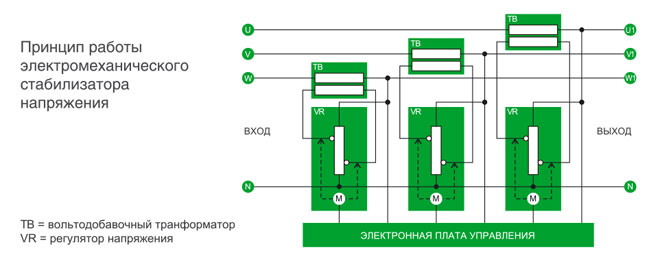
In all cases, the stabilizer is obliged to provide power supply that meets the norm.
Attention, the power of the stabilizer should exceed by 25-30% the total power of the equipment in the manned room. Only then can the normal operation of the device be guaranteed.
The main principle of operation of stabilizers of any type is to monitor the magnitude of the incoming voltage and adjust it in various ways to the required level. As soon as voltage is applied to the terminals of the stabilizer, it is compared with the set value. For a household network, this is 220 volts. The next moment, the device understands in which direction an adjustment is needed. Then, in various ways, the parameters are normalized. Such a cycle takes milliseconds and is carried out constantly. The response speed of the device ensures the stability of the electricity supplied to the consumer.
But, periodically there are conditions when it is necessary to supply energy directly from the external network. In these cases, a special mode of operation comes to the rescue - bypass.
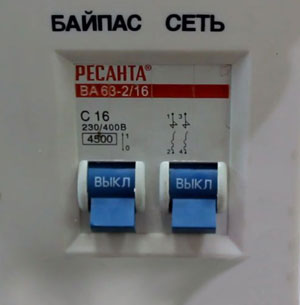
Why bypass mode is needed
Regardless of the type and power of the stabilizer, it may be necessary to exclude it from the power supply network at home. However, the need for electricity still remains, and switching wires and fiddling with terminals is not very convenient. In this case, a mode called Bypass comes to the rescue. Translated from English, bypass means bypass or transit.Bypass makes it possible to isolate the stabilizer and allows, without bothering, to power the home network from an external source.

The shutdown of the regulator can be caused by various reasons, such as repair work, the need for a short-term connection of powerful electrical appliances, and others.
Bypass Methods
Switching the stabilizer to bypass mode can be done with an external and internal switch. They, in turn, can be mechanical or electronic.
External are installed at the request of the consumer. It is very convenient to use them if there is a need to completely de-energize and remove the device, for example, for repair.
The simplest external switching is carried out by a three-position cam switch built into the electrical panel. This mechanical device allows you to switch the mode of operation of the stabilizer with one click. Sometimes power regulators are placed in cabinets specially made for them. They are placed in the premises of the consumer or on an electrical pole, next to the site. Such cabinets can initially be equipped with external switches of electronic or mechanical type.
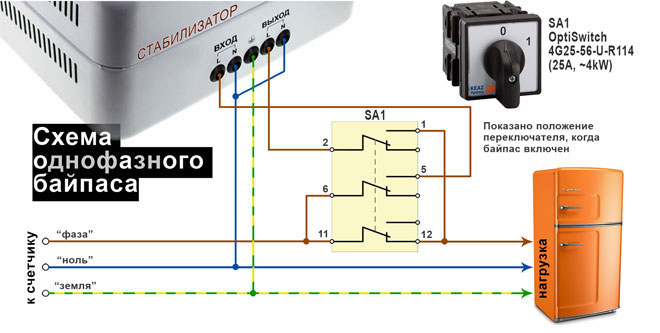
An external switch can be used to supplement any type of stabilizer network, regardless of configuration.
Important do not forget to switch the switch to the operating mode of the stabilizer after the repair work is completed.
mechanical method
The built-in mechanical switch works similarly to the external one. Switching is carried out by a toggle switch or a handle. Such switches are equipped with regulators with a power of 3 kVA. Lower power stabilizers are usually made portable and equipped with bypass outlets. The operating modes of switches and sockets are referred to as "Stabilization" and "Bypass".
Mechanical switches are simple and reliable. Therefore, they have long been successfully used in electrical circuits.
Attention! The stabilizer can be switched to bypass mode only by disconnecting it from the mains. Manufacturers specifically place the switches side by side, subtly hinting at their relationship. Those. first you need to turn off the toggle switch or the "Network" button, and only then turn on the bypass mode. Before that, you should make sure that the engines of the refrigerator, air conditioner, washing machine and other sufficiently powerful consumers are not working. If the engines are running, it is advisable to wait for them to stop.
Disabling the bypass mode is performed in the reverse order.
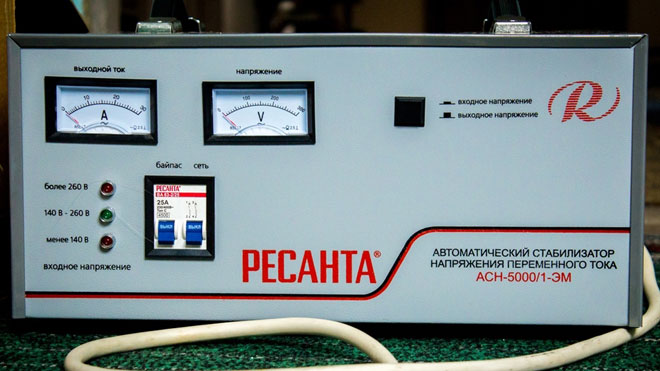
Electronic way
Electronic switching is carried out in two ways − manual and automatic.
In manual mode, when you press the "Bypass" button, an electrical signal is sent to the relay or semiconductors. And they already turn on the stabilizer bypass mode. With this switching option, the recommendations for the mechanical method should be followed.
In automatic mode, the electronic method of switching to bypass mode is carried out by the processor using a relay or semiconductors. Automatically, electricity can start bypassing the regulator for two reasons - these are critical situations or stable voltage for a long time. In both cases, the regulator controls the incoming voltage.
Extreme situations can be caused by overloading or failure of the stabilizing device.Overloading usually occurs due to a malfunction of electrical appliances or the connection of additional powerful equipment to the home network. In this case, the bypass mode will turn on only if the input voltage is correct. If at this moment the voltage of the external network is unstable, then the stabilizer will simply turn off the electricity supply. Returning normal parameters (reducing the load) will automatically cause a switch to stabilization mode.
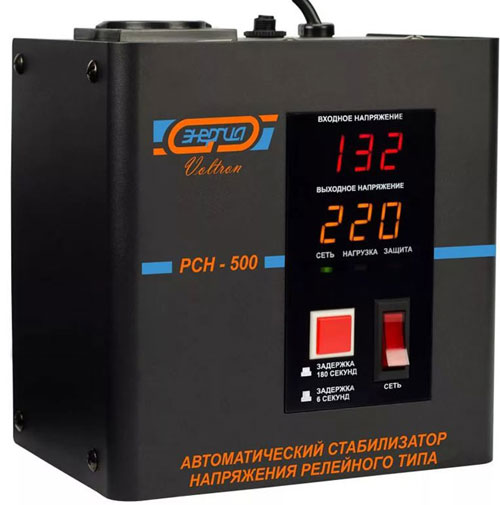
For some regulators, automatic bypass is possible, with a stable supply voltage. In this situation, power stabilization is not required. After switching, the device controls the parameters of electrical energy and switches on the stabilization mode if necessary.
Electronic switching allows the stabilizer to respond quickly in extreme situations and eliminates the influence of the human factor.
Why use a bypass
The need to use a bypass does not occur very often. However, you need to be prepared for such situations and know when such a need may occur. Switching to stabilizer bypass mode can be caused by a number of reasons, such as:
- Continuous and stable voltage in the supply network. The normal power supply mode allows you to exclude the stabilizer from work, thereby increasing its life.
- The need for preventive maintenance in the device itself.
- The input voltage is too low or too unstable. The stabilizer can not cope with their duties. In this case, it is enough to provide at least lighting and the device can be temporarily turned off.
- The power of the temporarily connected equipment is greater than the capabilities of the stabilizer (welding work, powerful pump, etc.), and the input voltage is stable.
- The need for construction work with a large release of dust and moisture. In this case, it is better not to use the regulator and cover it with a material that excludes its contamination.
- Stabilizer failure.
In other cases, the use of bypass mode is undesirable.
As a conclusion, we can say that the ability to switch to bypass mode is a necessary option for the stabilizer. With it, you can easily and quickly provide power supply bypassing the device. When choosing a stabilizer, out of two equal ones, it is better to choose a model with a bypass.
Similar articles:
